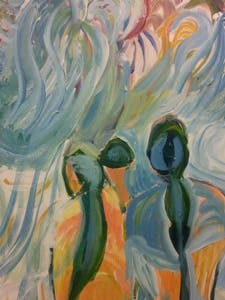Many Parkinson experts across the world have been reporting a surprising, remarkable phenomenon: many patients treated with drugs that increase dopamine activity in the brain exhibit new creative talents, including painting, sculpting, writing, and many more.

Prof. Rivka Inzelberg of Tel Aviv University‘s Sackler Faculty of Medicine first noticed something was weird when instead of bringing her gifts like flowers and chocolate (which is a common practice in several countries), patients would start bringing art they did themselves. Inspired by this fact and fueled by a touch of inspiration, she set out to seach the literature for other similar cases – and she wasn’t disappointed.
She found that all patients who manifest this sudden increase in creativity were being treated with either synthetic precursors of dopamine or dopamine receptor agonists, which increase the amount of dopamine activity in the brain by stimulating receptors. Dopamine plays a major role in the brain system that is responsible for reward-driven learning. Every type of reward that has been studied increases the level of dopamine transmission in the brain. Dopamine and artistry have long been connected, perhaps the best example being Van Gogh, who suffered from psychosis, but is by far one of the best painters to walk the face of the Earth. Many actually believe that the psychosis itself was the source of his genius.
Apparently there are no limits in terms of the talents patients grow; one patient turned from non-artistic to Nobel-winning poet in a matter of years and an architect who started painting brilliant human figures after treatment.
Another possibility is that the patients have always had this hidden talent, but were actually afraid to show it. But what’s interesting is that most patients have reported a connection between the medication dose and the creativity they feel, being able to lift or drop their creativity level by taking more or less medication. Inzelberg believes that such artistic expressions could also be useful from a therapeutic point of view, as all patients reported they feel better when doing their art – both psychologically and physiologically.
The next step is to characterize the patients that exhibit this creativity burst and figure out what differentiates them from the others.
“We want to screen patients under treatment for creativity and impulsivity to see if we can identify what is unique in those who do become more creative,” says Inzelberg.
Also, this could have valuable information for creativity in people without suffering from this disease. The study will be published in Behavioral Neuroscience.


